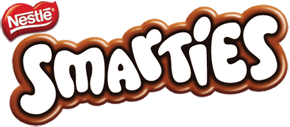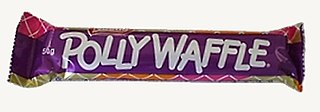Related Research Articles

The Hershey Company, often called just Hershey or Hershey's, is an American multinational confectionery company headquartered in Hershey, Pennsylvania, United States, which is also home to Hersheypark and Hershey's Chocolate World. The Hershey Company is one of the largest chocolate manufacturers in the world; it also manufactures baked products, such as cookies and cakes, and sells beverages like milkshakes, as well as other products. The Hershey Company was founded by Milton S. Hershey in 1894 as the Hershey Chocolate Company, originally established as a subsidiary of his Lancaster Caramel Company. The Hershey Trust Company owns a minority stake but retains a majority of the voting power within the company.

Kiwiana are certain items and icons from New Zealand's heritage, especially from around the middle of the 20th century, that are seen as representing iconic New Zealand elements. These "quirky things that contribute to a sense of nationhood" include both genuine cultural icons and kitsch.

Kit Kat is a chocolate-covered wafer bar confection created by Rowntree's of York, England. It is produced globally by Nestlé, except in the United States, where it is made under licence by the H. B. Reese Candy Company, a division of the Hershey Company.

Smarties are color-varied, sugar-coated, dragée chocolate confectionery. They have been manufactured since 1937, originally by H.I. Rowntree & Company in the United Kingdom, and now by Nestlé.

Willy Wonka is a fictional character appearing in British author Roald Dahl's 1964 children's novel Charlie and the Chocolate Factory, its 1972 sequel Charlie and the Great Glass Elevator and several films based on those books. He is the eccentric founder and proprietor of the Wonka Chocolate Factory.

Ruth Jones Graves Wakefield was an American chef, best known for her innovations in the baking field. Ruth pioneered the first chocolate chip cookie recipe, an invention many people incorrectly assume was a mistake. Her new dessert, supposedly conceived of as she returned from a vacation in Egypt, is the inspiration behind the massively popular Toll House Chocolate Chip Cookie. Throughout her life, Ruth found occupation as a dietitian, educator, business owner, and published author, most notably of the cookbook, Ruth Wakefield’s, Toll House: Tried and True Recipes.

Aero is an aerated chocolate bar manufactured by the Vevey-based company Nestlé. Originally produced by Rowntree's, Aero bars were introduced in 1935 to the North of England as the "new chocolate". By the end of that year, it had proved sufficiently popular with consumers that sales were extended throughout the United Kingdom.

Milo is a chocolate-flavoured malted powder product produced by Nestlé, typically mixed with milk, hot water, or both, to produce a beverage. It was originally developed in Australia by Thomas Mayne (1901–1995) in 1934.

White chocolate is a confectionery typically made of sugar, milk, and cocoa butter, but no cocoa solids. It is pale ivory in color, and lacks many of the compounds found in milk, dark, and other chocolates. It is solid at room temperature because the melting point of cocoa butter, the only white cocoa bean component, is 35 °C (95 °F).

Reese's Peanut Butter Cups are an American candy by the Hershey Company consisting of a peanut butter filling encased in chocolate. They were created on November 15, 1928, by H. B. Reese, a former dairy farmer and shipping foreman for Milton S. Hershey. Reese was let go from his job with Hershey when the Round Barn which he managed was shut down for cost-saving measures. He subsequently decided to start his own candy business. Reese's are a top-selling candy brand worldwide, with more than $2 billion in annual sales.

After Eight Mint Chocolate Thins, often referred to as simply After Eights, are a brand of mint chocolate covered sugar confectionery. They were created by Rowntree Company Limited in the UK in 1962 and have been manufactured by Nestlé since its acquisition of Rowntree in 1988.

The Droste effect, known in art as an example of mise en abyme, is the effect of a picture recursively appearing within itself, in a place where a similar picture would realistically be expected to appear. This produces a loop which in theory could go on forever, but in practice only continues as far as the image's resolution allows.

Quality Street is a line of tinned and boxed toffees, chocolates and sweets, first manufactured in 1936 by Mackintosh's in Halifax, West Yorkshire, England. It was named after J. M. Barrie's play Quality Street. Since 1988, the confectionery has been produced by Nestlé. Quality Street has long been a competitor to Cadbury Roses, which were launched by Cadbury in 1938. Nestlé does not distribute Quality Street in the US, but it may be ordered online for delivery, or found in specialty candy shops.

Chokito is a combination chocolate bar brand, created and owned by Nestlé. The original bar consists of an ingot-shaped caramel fudge center, with a coating of milk chocolate and crisped rice on the outside. It is manufactured by Nestlé in Switzerland, Brazil, and Australia.

Blue Riband is a chocolate biscuit currently produced by Nestlé. The bar was launched in 1936 by Gray Dunn, one of Scotland's major biscuit producers and a subsidiary of confectionery giant Rowntree's, as a real milk chocolate wafer – a crisp wafer biscuit covered in a very thin layer of milk chocolate. They also produced a similar, non coated, wafer called Caramel Wafer. The Gray Dunn factory also made Breakaway. The Gray Dunn factory in Glasgow continued to produce Blue Riband until 1994 when Nestlé closed it down and moved production to Newcastle.
Milkybar, called Galak in Continental Europe and Latin America, is a white chocolate confection produced by Nestlé since 1936 and sold worldwide. According to Nestlé, Milkybar/Galak contains no artificial colours, flavours or preservatives. In Australia and New Zealand, Milkybar does not contain cocoa butter, and is therefore not labelled as chocolate.

Nesquik is a brand of food products made by Swiss company Nestlé. In 1948, Nestlé launched a drink mix for chocolate-flavored milk called Nestlé Quik in the United States; this was released in Europe during the 1950s as Nesquik.
Animal Bar was a brand of chocolate bar, made by Nestlé in the United Kingdom.

Hoadley's Chocolates was an Australian confectionery company founded in 1913 famous for the Polly Waffle and Violet Crumble chocolate bars. The company was bought by Rowntree Mackintosh Confectionery in 1972, which would then be acquired by Nestlé in 1988.

Peter's Chocolate was a Swiss chocolate producer founded in 1867 by Daniel Peter in Vevey. It is notably the company who produced the first successful milk chocolate bar. It merged with Kohler in 1904, with Cailler in 1911, and was bought by Nestlé in 1929. The brand was purchased by Cargill in 2002. Peter's Chocolate was recurrently advertised with the image of a traditionally dressed man waving a chocolate bar, often with an Alpine scenery.
References
- ↑ "Saudades? Relembre todas as coleções do chocolate Surpresa". Super (in Brazilian Portuguese). Retrieved 2024-07-03.